12 Types of Poisonous Spiders


Written and verified by the biologist Cesar Paul Gonzalez Gonzalez
Although some consider spiders to be one of the most poisonous species around, the fact of the matter is that not many types of arachnids are lethal to humans. In fact, some specimens that people call lethal “only” cause intense pain that subsides after a few days without the need for too much treatment.
Don’t let their scary appearance or size cloud your judgment, because, despite their appearance, most arachnids aren’t dangerous. Strangely, it’s many of the smaller spiders that are often the most harmful. Read on to learn more about the 12 most interesting and deadly poisonous arachnids in the world.
What are spiders exactly?
Spiders make up some of the most diverse invertebrates in the world and play an important role in different ecosystems. The sizes of this group depend on each species, and they can measure a few millimeters or reach 30 centimeters (12 inches) in length from leg to leg.
Spiders belong to the order Araneae, which is defined as species possessing a body with 4 pairs of moving legs. They’re arthropods, just like insects, but they aren’t direct relatives.
Human interaction with dangerous spiders is very rare, as most inhabit jungle regions or caves. However, the destruction of natural ecosystems, urbanization, and agriculture have brought us closer together, putting both groups at risk. In fact, most spiders aren’t aggressive, but attack as a form of defense when feeling in imminent danger.
Spiders and their poison
Arachnids are predators that have poisonous glands attached to their fangs, which they use to hunt and defend themselves. For this reason, most species use their poisons to drive their enemies back or incapacitate them while they escape. What’s more, despite their bad reputation, only a few specimens have the potential to be lethal to humans.
These invertebrates don’t “sting”, but bite their victims, injecting the venom from the glands in the upper part of their chelicerae. In fact, very often the problem isn’t in the poisons, but in the reaction of the victims’ bodies to the toxins, which can lead to anaphylaxis.
Types of poisonous spiders
Due to the large number of spiders that exist, this list includes the most poisonous and feared spiders. We’ll also disprove some of the myths regarding them, clearing their name of their bad reputations. Don’t miss it!
Banana spider (Phoneutria nigriventer)
The first of our featured types of poisonous spiders is the banana spider. It’s distributed in several localities in South America, where it inhabits humid jungle areas. The venom of this type of spider has a neurotoxic action and produces severe pain, redness, cramps, seizures, and paralysis. Despite sounding dangerous, accidents are minor and less than 1% of cases result in the death of the victim.
A curious fact about the bite of this spider is that it can cause an effect called priapism, which is a very painful erection. For this reason, it has been rather in the spotlight as a potential way to combat erectile dysfunction in men.
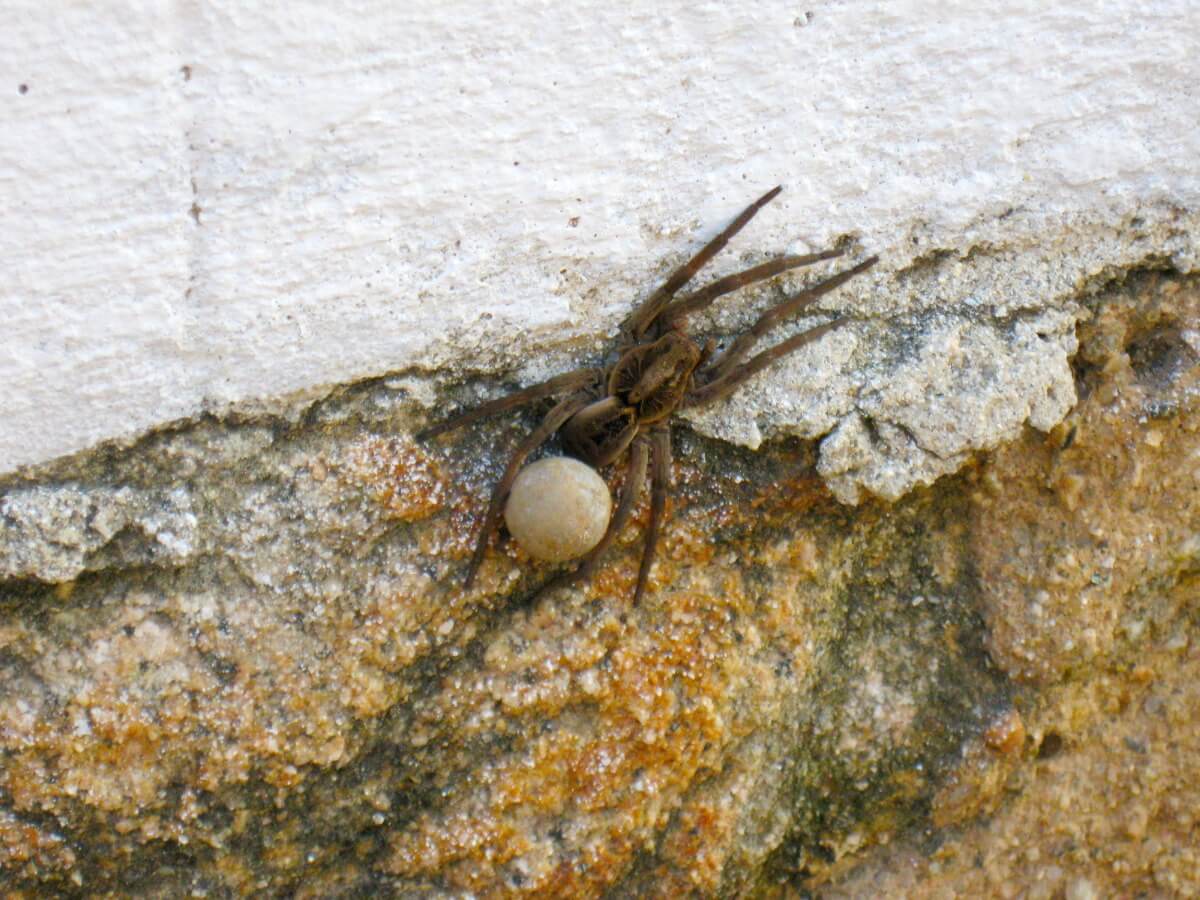
Goliath birdeater (Theraphosa blondi)
This beautiful arachnid is one of the largest of the group of tarantulas and gets it name from the fact that certain birds form part of its diet. Like the previous spider, the venom of this specimen contains neurotoxins among its components that usually cause a lot of pain and paralysis.
Despite this spider’s scary appearance, its bite isn’t lethal for humans, but it is very painful, due to the large size of its “fangs”. Their chelicerae by themselves reach a length of up to 2 centimeters (0.8 inches), so you imagine what they can do!
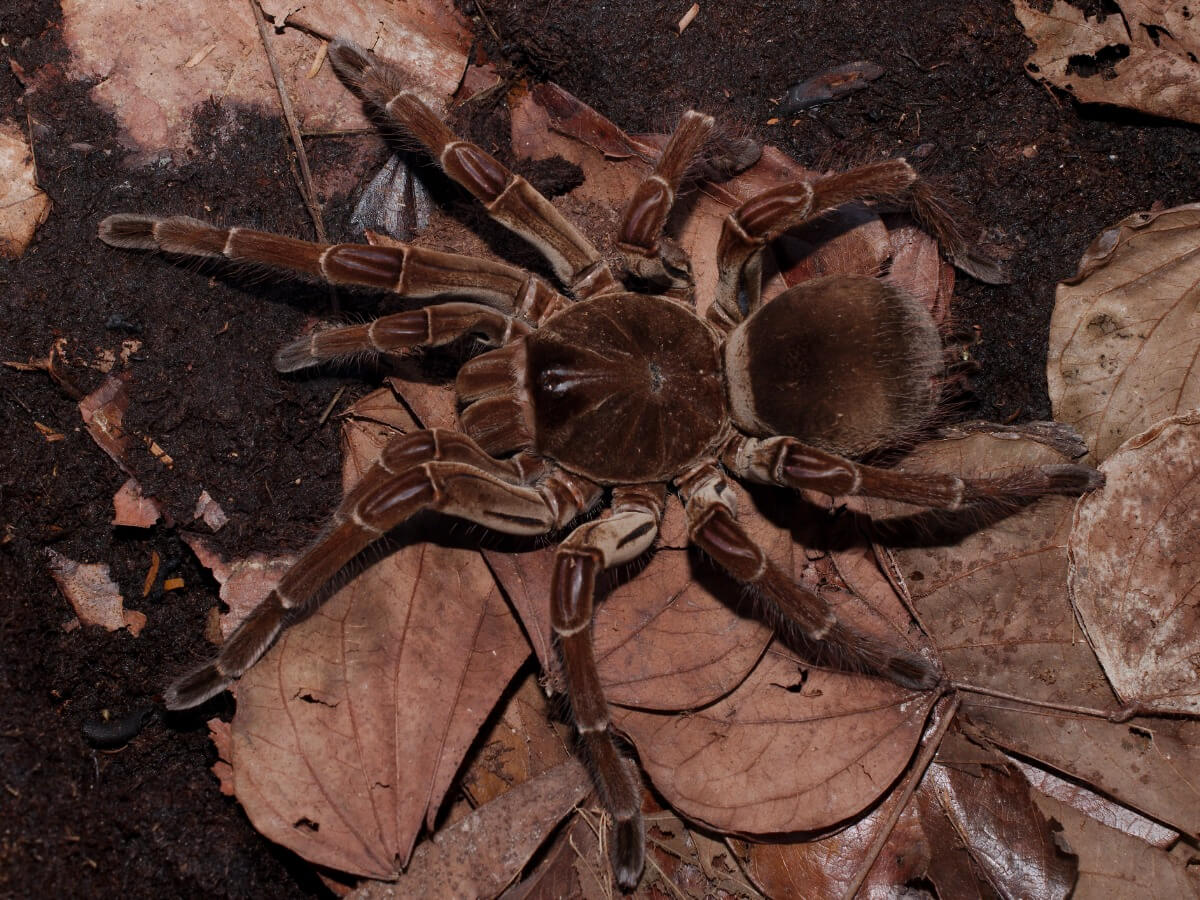
Black widow (Latrodectus mactans)
This species is one of the most common types of poisonous spiders in North and South America. It’s recognized and feared by many people, due to its bad reputation and peculiar color. However, the chance of death from its venom is very low, as long as the bite is dealt with in the right way.
Contrary to popular belief, most cases of this “dangerous” spider bite are treated without antitoxins. Moreover, even today, traditional therapies are preferred, as controversy has raged due to the allergic reactions caused by the antitoxins administered.
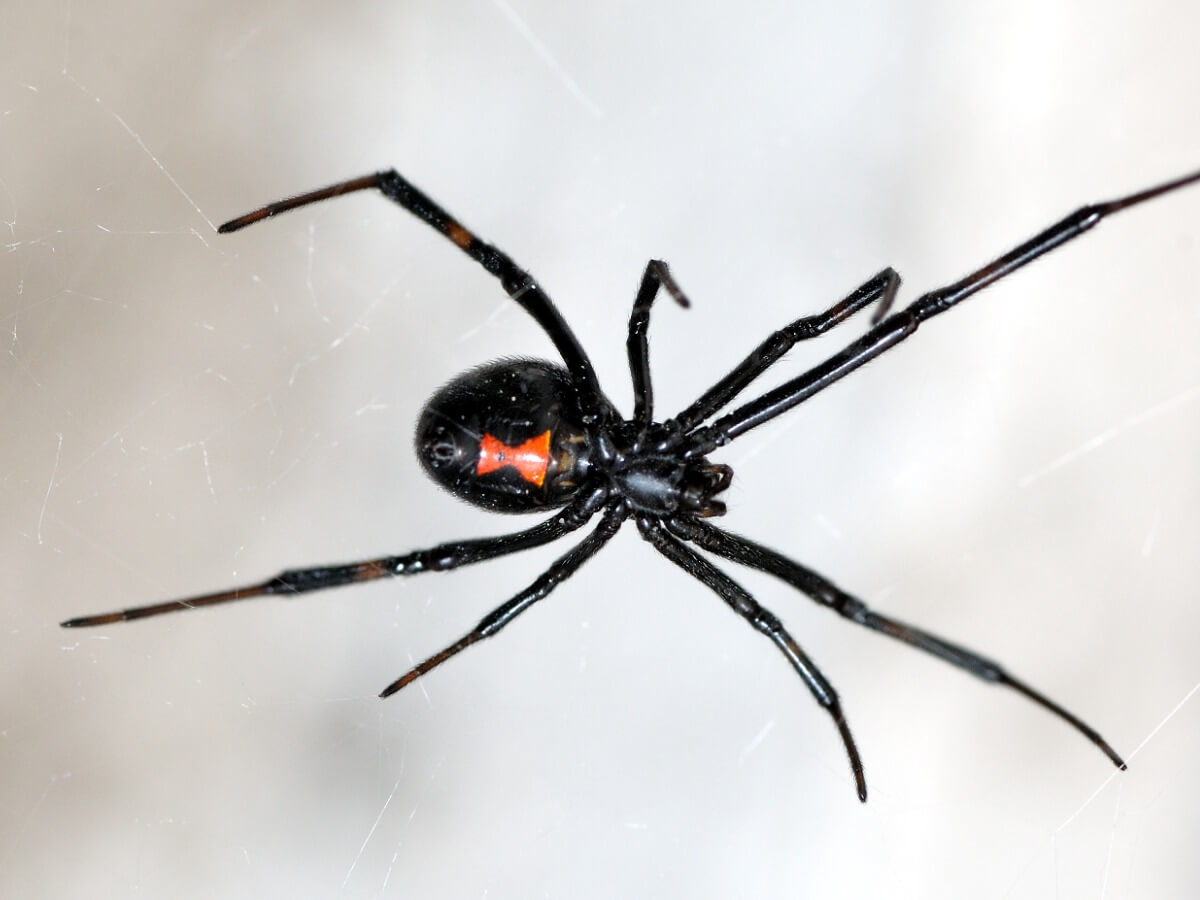
6-eyed sand spider (Sicarius thomisoides)
This arachnid inhabits desert and semi-desert environments, in which it buries itself partially in the sand. Like the others we’ve mentioned, these spiders are feared because of their dangerous venom, as it contains a dermonecrotic agent that “kills” the muscle and can cause the loss of the limb.
The genera Sicarius and Loxosceles are one of the few that cause significant harm to the victim. Symptoms of wounds from these spiders are intense pain and purple discoloration of the muscle, with a progressive loss of mobility. However, despite its dangerous bite, the medical prognosis is usually positive if it’s treated correctly.
Hobo spider (Eratigena agrestis)
This specimen native to Europe has managed to colonize other countries such as the United States and Canada. It’s a terrestrial species that inhabits closed and hidden spaces, so it usually enters houses and gets between clothes and into poorly lit corners. Although it was considered a dangerous spider due to its necrotic venom, it’s now known that this isn’t the case.
Since 1980, the bite of this spider has been feared because, according to some clinical reports, it could cause necrosis in its venom. However, this wasn’t true, as this information came from cases in which it was confused with other spiders, and even other invertebrates. An article in the scientific journal Medical Entomology confirmed that its bite isn’t dangerous for humans.

Mouse spider (Missulena)
Native to Australia, these arachnids make up a group that inhabit forests and semi-arid scrub areas. Moreover, apart from being poisonous creatures, they’re also capable of “flying” or being dragged, which allows them to travel great distances thanks to the wind.
This spider’s bite has neurotoxic components that cause severe pain and numbness in the area near the wound. Despite this, most of the clinical cases caused by this spider produce minor or moderate discomfort, so it isn’t considered dangerous for humans.
Yellow sac spider (Cheiracanthium punctorium)
The yellow sac spider is one of the most common poisonous spider types in Europe and Central Asia. Although it’s recognized for having venom similar to that of Loxosceles, this has been denied, as its bite doesn’t contain necrotic compounds. However, it is one of the most painful, as the venom is cytolytic, causing more severe symptoms than a wasp sting.
Giant huntsman spider (Heteropoda maxima)
This arachnid rivals the Goliath birdeater in size, but you can easily tell the difference between them by its “crab-like” appearance, due to its small body with elongated legs. Despite its enormous appearance, this invertebrate isn’t among the most-feared poisonous spiders, as its bite isn’t dangerous for humans.
In fact, the symptoms seem to be linked more to the “cut” in the skin than to the poison that the animal produces.
Sydney funnel web spider (Atrax robustus)
This species is native to eastern Australia and is one of the most dangerous poisonous spiders in the world. This is because their bite contains an extremely dangerous neurotoxin, called atracotoxin, which can lead to fatal cardiorespiratory arrest. This effect is due to the damage caused to the nervous system and can result in the death of the patient if it isn’t treated in time.
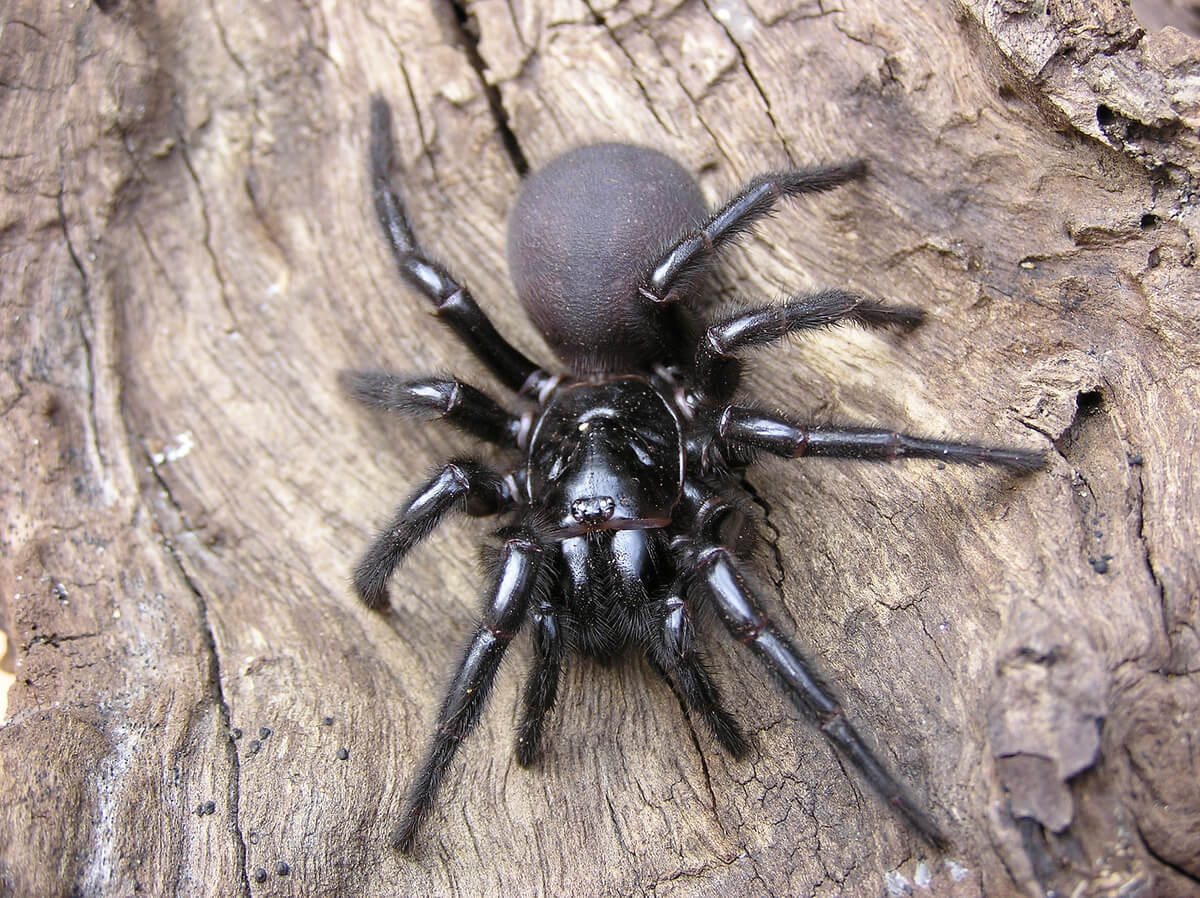
Wolf spider (Lycosa erythrognatha)
Spiders of this type are predators that don’t depend on their silk to capture their prey, but instead use their venom to paralyze them. Despite this, they aren’t considered dangerous for humans, as the effects of their bite aren’t usually severe. What’s more, in most cases it isn’t necessary to use the specific antitoxin for wolf spiders, as they don’t cause damage beyond the intense pain.
Redback spider (Latrodectus hasselti)
This common invertebrate in Australia belongs to the same genus as the black widow, so the bite of both produces quite similar symptoms. In fact, the clinical syndrome caused by this group is called latrodectism and produces pain, spasms, tachycardia, and muscle stiffness in the area of the bite.
This species possess neurotoxins that rarely result in death if the patients are under medical care. In addition, there are specific antitoxins that can relieve pain in a few hours, but in most cases they aren’t necessary.
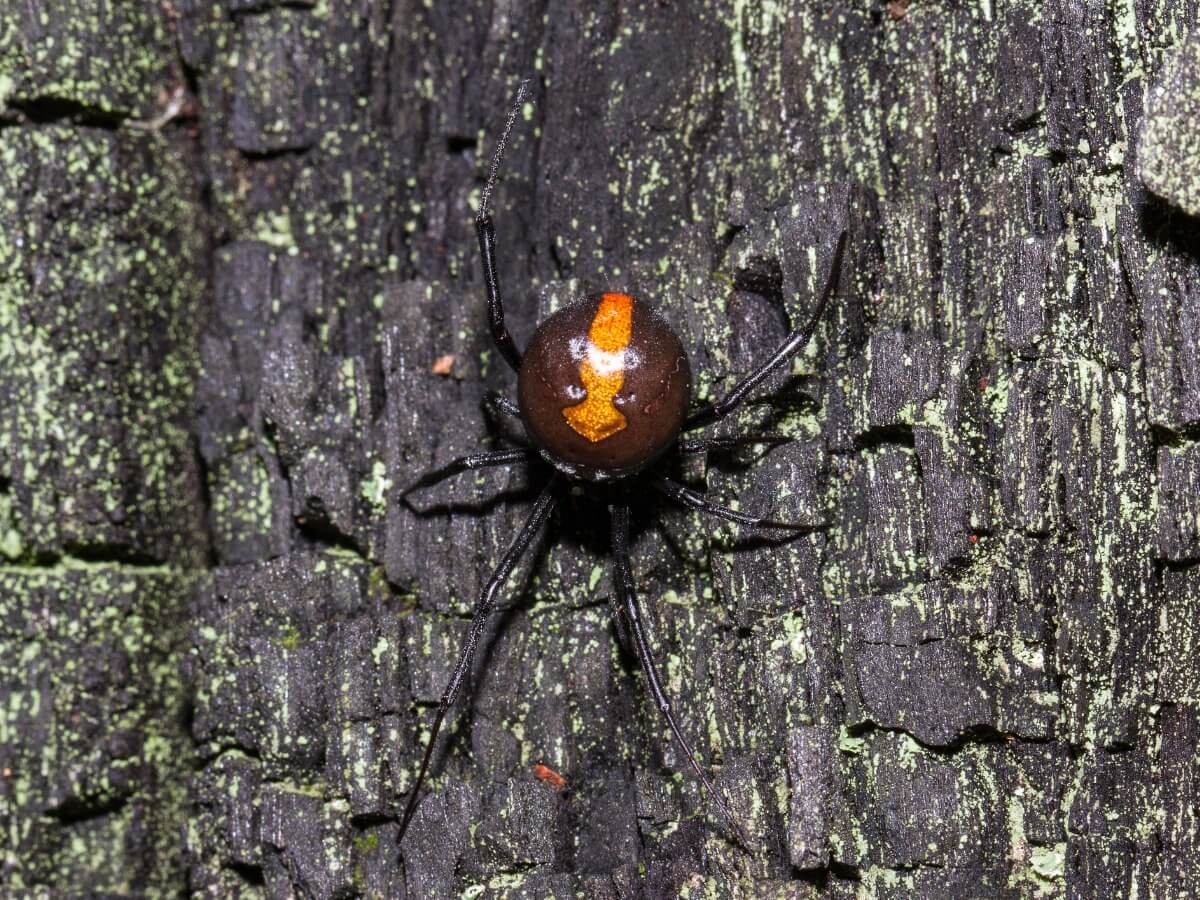
Brown recluse spider (Loxosceles reclusa)
Species of the genus Loxosceles are also known as “fiddleback spiders”. As they’re found in most areas of the world, the effect of their venom is very well known too, which is why its clinical syndrome is called loxoscelism. The bite of this invertebrate causes the “death” of the muscle, something also known as necrotic arachnoidism.
The brown recluse spider is the arachnid that causes the most severe symptoms of this group and if it’s not treated in time it can lead to the death of the victim. Some of the most frequent symptoms are intense pain, fever, vomiting, kidney failure, and sometimes, the loss of the affected limb.
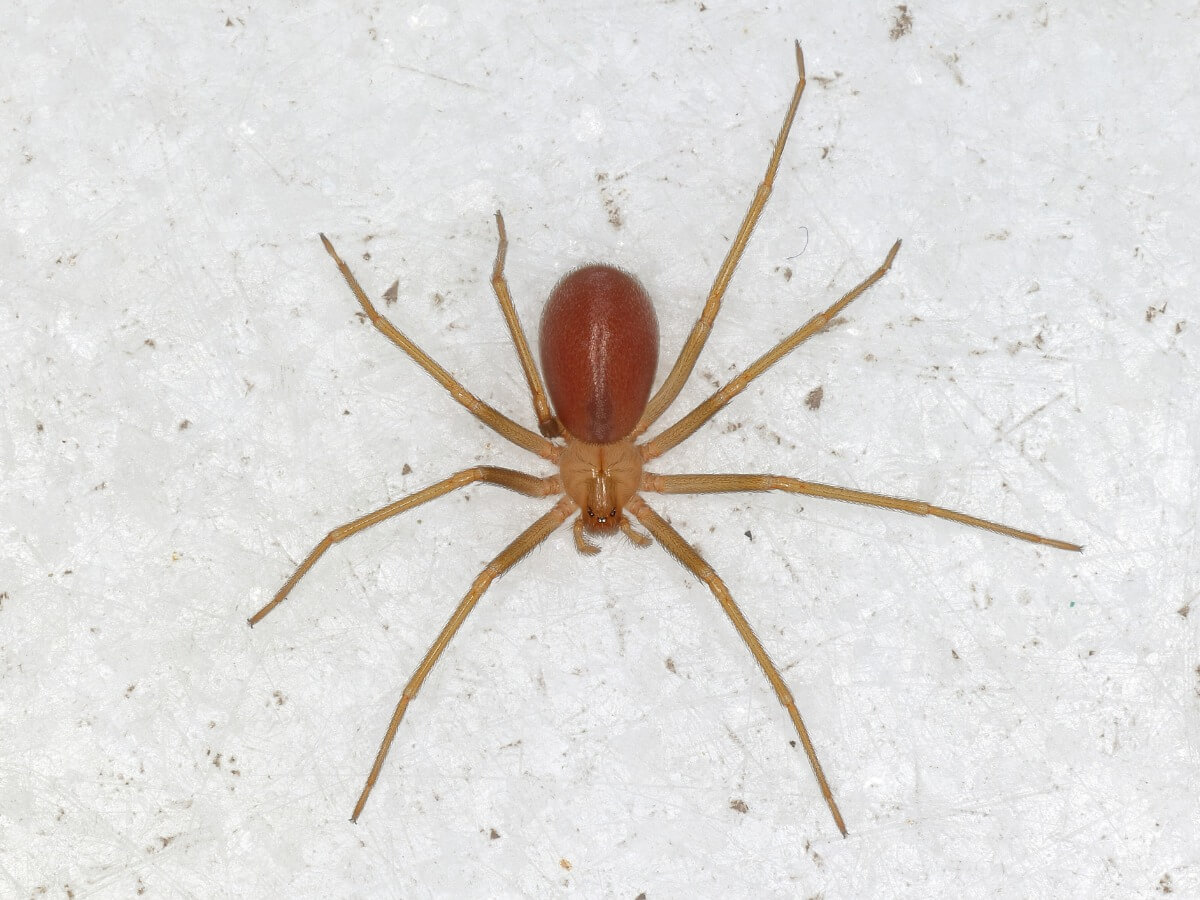
As you can see, most of the different types of poisonous spiders don’t produce deadly poisons for humans. However, this doesn’t mean that the bite won’t be extremely painful. So, our clear advice is to avoid handling any spider no matter how harmless it may appear to be. If you do happen to be bitten, then go urgently to hospital to get it seen to.
All cited sources were thoroughly reviewed by our team to ensure their quality, reliability, currency, and validity. The bibliography of this article was considered reliable and of academic or scientific accuracy.
- Herzig, V., & King, G. F. (2013). The neurotoxic mode of action of venoms from the spider family Theraphosidae. In Spider Ecophysiology (pp. 203-215). Springer, Berlin, Heidelberg.
- Baerg, W. J. (1923). The Effects of the Bite of Latrodectus mactans Fabr. The Journal of Parasitology, 9(3), 161-169.
- Offerman, S. R., Daubert, G. P., & Clark, R. F. (2011). The treatment of black widow spider envenomation with antivenin Latrodectus mactans: a case series. The Permanente Journal, 15(3), 76.
- Arán-Sekul, T., Perčić-Sarmiento, I., Valencia, V., Olivero, N., Rojas, J. M., Araya, J. E., … & Catalán, A. (2020). Toxicological Characterization and Phospholipase D Activity of the Venom of the Spider Sicarius thomisoides. Toxins, 12(11), 702.
- Gaver-Wainwright, M. M., Zack, R. S., Foradori, M. J., & Lavine, L. C. (2011). Misdiagnosis of spider bites: bacterial associates, mechanical pathogen transfer, and hemolytic potential of venom from the hobo spider, Tegenaria agrestis (Araneae: Agelenidae). Journal of medical entomology, 48(2), 382-388.
- Isbister, G. K., & Gray, M. R. (2004). Bites by Australian mygalomorph spiders (Araneae, Mygalomorphae), including funnel-web spiders (Atracinae) and mouse spiders (Actinopodidae: Missulena spp). Toxicon, 43(2), 133-140.
- Papini, R. (2012). Documented bites by a yellow sac spider (Cheiracanthium punctorium) in Italy: a case report. Journal of Venomous Animals and Toxins including Tropical Diseases, 18, 349-354.
- Nicholson, G. M., Little, M. J., & Birinyi-Strachan, L. C. (2004). Structure and function of δ-atracotoxins: lethal neurotoxins targeting the voltage-gated sodium channel. Toxicon, 43(5), 587-599.
- Ribeiro, L. A., Jorge, M. T., Piesco, R. V., & de Andrade Nishioka, S. (1990). Wolf spider bites in Sao Paulo, Brazil: a clinical and epidemiological study of 515 cases. Toxicon, 28(6), 715-717.
- Ortuño Lazarte, Patricia Elizabeth, & Ortiz Samur, Nadir Peggy. (2009). LATRODECTISMO. Revista Científica Ciencia Médica, 12(1), 25-28.
- Rodriguez-Jara, Pablo, Montes-Carmona, Jose-Francisco, Albarracin-Arjona, Beatriz, & Infante-Cossio, Pedro. (2017). Loxosceles spider bite in lower lip. Revista Española de Cirugía Oral y Maxilofacial, 39(2), 117-119. https://dx.doi.org/10.1016/j.maxilo.2016.02.004
This text is provided for informational purposes only and does not replace consultation with a professional. If in doubt, consult your specialist.